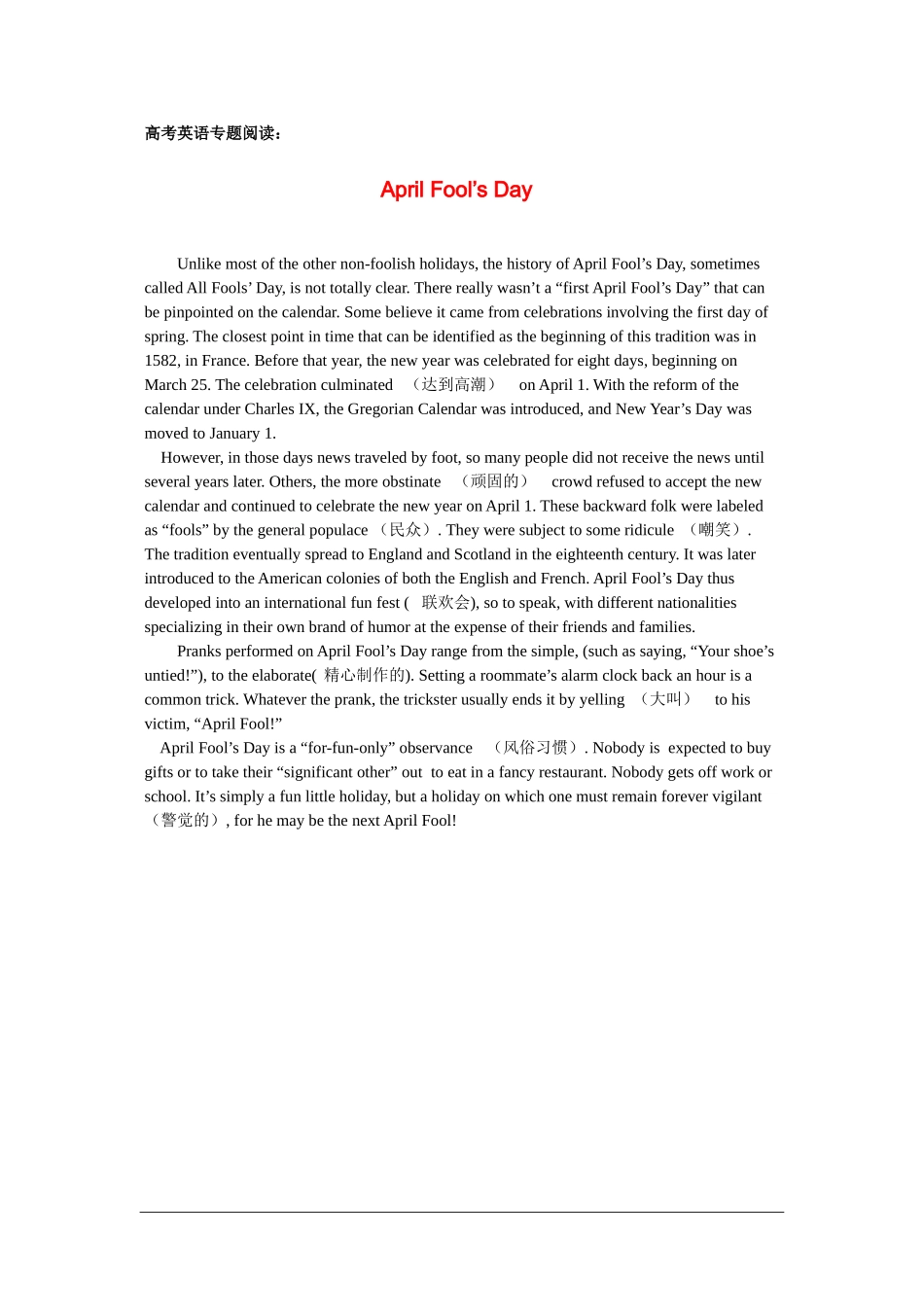高考英语专题阅读:April Fool’s DayUnlike most of the other non-foolish holidays, the history of April Fool’s Day, sometimes called All Fools’ Day, is not totally clear. There really wasn’t a “first April Fool’s Day” that can be pinpointed on the calendar. Some believe it came from celebrations involving the first day of spring. The closest point in time that can be identified as the beginning of this tradition was in 1582, in France. Before that year, the new year was celebrated for eight days, beginning on March 25. The celebration culminated (达到高潮) on April 1. With the reform of the calendar under Charles IX, the Gregorian Calendar was introduced, and New Year’s Day was moved to January 1. However, in those days news traveled by foot, so many people did not receive the news until several years later. Others, the more obstinate (顽固的) crowd refused to accept the new calendar and continued to celebrate the new year on April 1. These backward folk were labeled as “fools” by the general populace (民众). They were subject to some ridicule (嘲笑). The tradition eventually spread to England and Scotland in the eighteenth century. It was later introduced to the American colonies of both the English and French. April Fool’s Day thus developed into an international fun fest ( 联欢会), so to speak, with different nationalities specializing in their own brand of humor at the expense of their friends and families.Pranks performed on April Fool’s Day range from the simple, (such as saying, “Your shoe’s untied!”), to the elaborate( 精心制作的). Setting a roommate’s alarm clock back an hour is a common trick. Whatever the prank, the trickster usually ends it by yelling (大叫) to his victim, “April Fool!” April Fool’s Day is a “for-fun-only” observance (风俗习惯). Nobody is expected to buy gifts or to take their “significant other” out to eat in a fancy restaurant. Nobody gets off work or school. It’s simply a fun little holiday, but a holiday on which one must remain forever vigilant(警觉的), for he may be the next April Fool!
